It’s one of Charlotte’s most storied Black neighborhoods. But does it deserve better?
In many ways, Charlotte’s McCrorey Heights feels like a neighborhood that’s being well looked after.
It feels like one that’s getting the care and respect most of its residents hoped it would get after receiving a local historic district designation in August 2022.
Much of this is thanks to people like Winston Robinson, who is something of an ad-hoc historian for this neighborhood of 167 houses — nestled barely two miles north of the heart of uptown — that were populated by Black Charlotteans of remarkable influence in the 1950s, ’60s and ’70s.
Take a tour with Robinson and it’ll start with him standing inside the mid-century modern home he bought in 2017 and telling you that it was built in 1957 and first occupied by a Black Presbyterian minister named Hercules Wilson and his wife Carrie. Then he’ll talk about how he can explain to his 6-year-old how attorney Thomas Wyche attacked segregation in Charlotte — while they look out of their window at the back of the house Wyche lived in for nearly half a century.
After starting as a dream, McCrorey Heights grew into a neighborhood full of notables
Outside, on Washington Avenue, you might run into smiling staffers from TreesCharlotte, a nonprofit that has made a massive project out of maintaining the neighborhood’s towering canopy.
Or you might run into his neighbor Ruth Greene, a longtime resident who spent 45 of her 75 years as a professor at nearby Johnson C. Smith University and who lauds McCrorey Heights as “lovely.”
“We’re happy that this experiment is still thriving now in 2024,” she says, referring to H.L. McCrorey (JCSU president from 1907 to 1947) and his decades-long effort to sell the homes to college-educated African Americans. Then, in a nod to people like Robinson, she adds: “It can’t happen without the next generation of engaged families.”
As Robinson’s tour continues on from there, though, his tenor periodically takes on a tone of disappointment, sometimes even rising to outright disgruntlement.
In the end, after walking the streets with him and after sitting with other longtime residents, it’s clear that the neighborhood has a legacy worth preserving and that many of the efforts to do so are going pretty well. But at the same time, it’s fair to wonder:
Nearly a year and a half after being designated as a historic district, is McCrorey Heights really getting the respect it deserves?
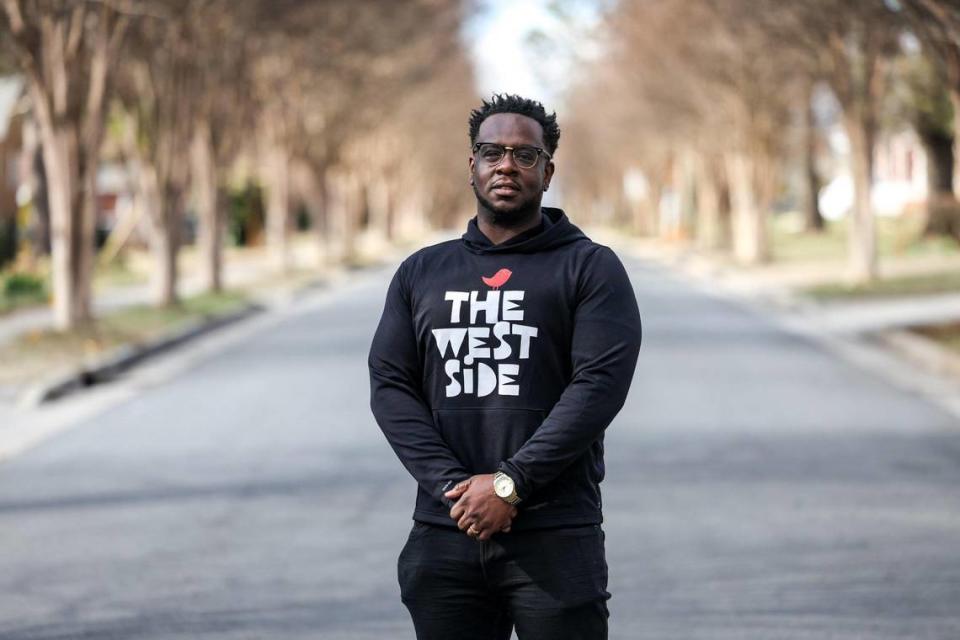
‘Not about making the neighborhood a museum’
Tracing the path the neighborhood took to obtaining the historic designation is pretty simple.
There had been talk about it for years, but the conversation accelerated after local historian Tom Hanchett spearheaded a research project that would yield a historical picture of McCrorey Heights specifically tailored to help the neighborhood association pursue such status, if it so desired. That project was completed in 2018.
“All I can say (to a neighborhood) is, ‘It’s a strong enough story that I believe it would qualify for designation, and here is the material you would need to be designated,’” says Hanchett, who has done similar work pertaining to Dilworth and Plaza Midwood (which also are now historic districts).
“But it’s something really the neighborhood has to want.”
Roughly around that same time, outsiders were starting to discover the neighborhood, and found its charm, its relative hidden-ness, and its close proximity to uptown appealing. One house was sold and demolished, with a big shiny new abode sprouting up in its place, refusing to blend in at all with the original, smaller, brick, ranch-style houses. Then the same thing happened to another original old house. Then another.
Suddenly, McCrorey Heights’ legacy was flashing before concerned longtime residents’ eyes.
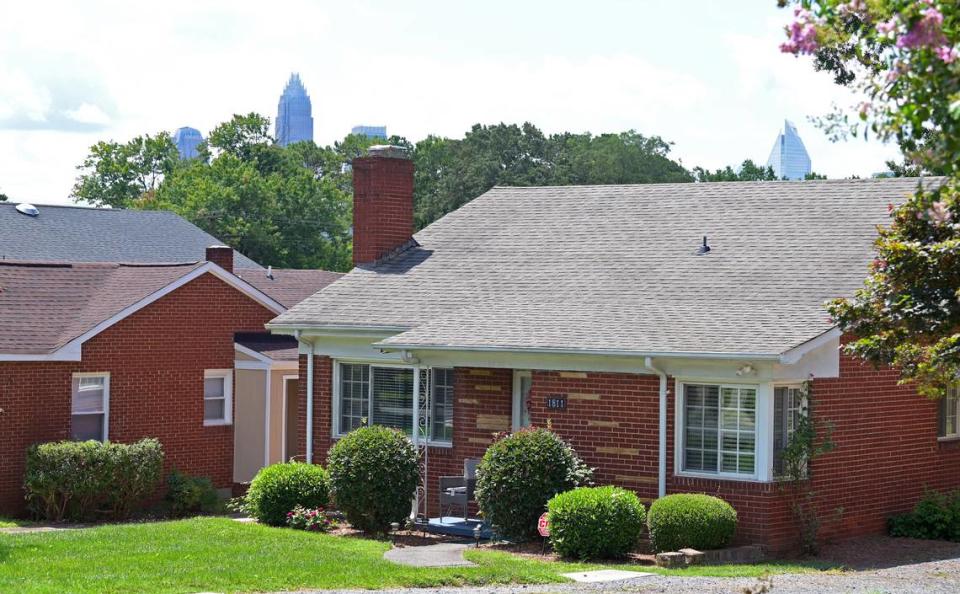
“The people who live there (in those newer, architecturally different houses) are very nice, and they’re great neighbors,” Robinson says. “And the thing is, they came from out of town, so they didn’t know any of this. ... But you could just see — like you can in many other communities — what it was trending towards.
“And I think that’s what really made it real.”
In response, a freshly reorganized and revitalized neighborhood association quickly marshaled its forces and started the formal process of seeking the designation. Hanchett’s legwork saved them a critical step, and they easily collected the required resident signatures for the city rezoning request.
Charlotte’s City Council voted to establish McCrorey Heights as a historic district on Aug. 15, 2022.
“The fact that this was designated — and designated as quickly as it was,” says Kristi Harpst, the program manager for historic districts for the City of Charlotte, “is a testament to the work and dedication of those neighborhood residents.”
Thanks to the designation, The Historic District Commission (HDC) can now delay the demolition of existing houses for up to a year, which is perhaps enough to dissuade an impatient potential investor; and it can require builders to demonstrate to the commission that the new home will be aesthetically similar to the razed home.
It cannot, however, stop demolition from happening.
So, for instance, Charlotte Mayor Vi Lyles — who, days before the City Council vote, irked residents by filing a demolition permit for the Madison Avenue home she owns — ultimately would have been allowed to raze the 1950s-era house built by Black engineer Isaac Heard Sr. even if she’d filed it after the vote. But with the historic designation in place, plans for new home construction must gain approval by the HDC, and Lyles recently told The Charlotte Observer that one she submitted was denied.
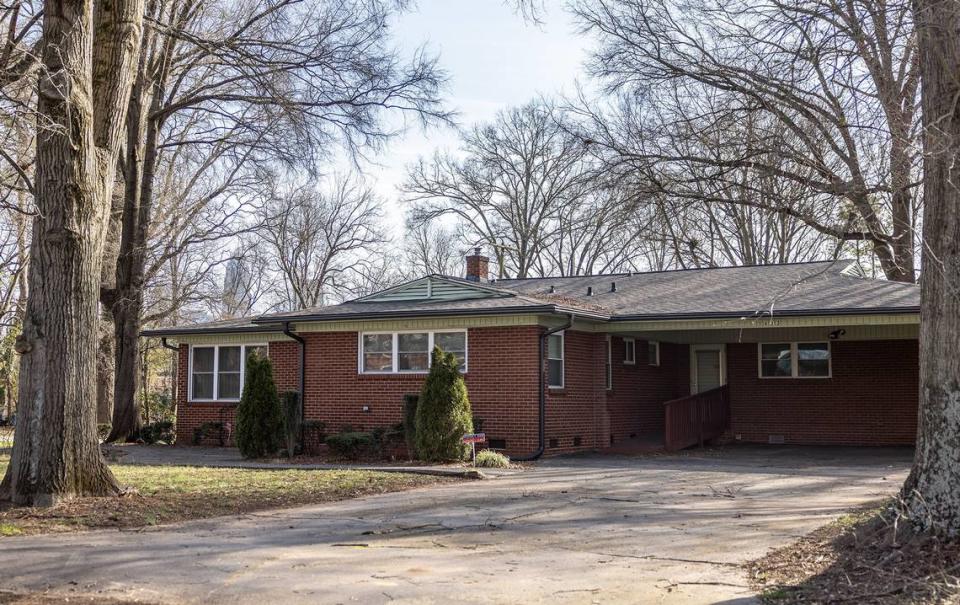
At the same time, there are limits to what the HDC can do.
For instance, the newer, much more modern-looking houses still don’t match, and won’t be required to. Another example: The HDC can prohibit a homeowner from painting brick; but it can’t tell someone what color to paint their house if it’s not brick.
“It’s not about making the neighborhood a museum,” Harpst says of the HDC’s role. “It’s about helping them manage growth and change and new development in their neighborhood in a way that complements the existing character.”
‘Everybody was proud of their homes here’
With at least some protections in place now in terms of the actual physical homes, concern is shifting to the environs.
Audwin Ross — a 66-year-old resident who has spent his entire life living in the house on Van Buren Avenue that his father (a Presbyterian minister) and mother (a teacher) built in 1955 — mentions the roadside eyesores that greet motorists entering McCrorey Heights via Patton Avenue.
“That looks bad up there,” he says of the section of street that cuts between the Vest Water Treatment Plant’s water towers and its industrial trappings. Among other issues, he says: “It’s got a bent-up guardrail that needs to be straightened out.”
He also worries about the number of properties that are being rented out.
“Next door’s a rental, and it’s got some issues,” Ross says. “The guy doesn’t care about the neighborhood and you see all the paper in front of his house. ... We really don’t need any renters. We need homeowners ... like the original (ones).” The original owners, he recalls fondly — the ones he remembers from his childhood — “were very particular about their surroundings, their homes, how they kept everything. Everything had to be placed just right.
“Those are the kind of neighbors we had in this neighborhood. ... Everybody was proud of their homes here.”
Marilyn Twitty Brown, one of the residents who led the charge toward getting McCrorey Heights the historic designation, says at least 30% to 40% of the homes in the neighborhood are currently rentals.
She says she believes there’s a correlation between the increase in rentals and the uptick in police responding to “incidents” in the neighborhood. She also notes that while complaints can be lodged with code enforcement if yards or facades are unkempt, there’s little else to be done since the neighborhood association lacks the power to impose rental restrictions upon homeowners.
“I feel proud to live here,” says Brown, 74, who returned almost 12 years ago to live in the house on Madison Avenue that she grew up in (built by her father Walter Twitty, who worked for North Carolina Mutual Insurance Company, and her mother Samella, a longtime Charlotte public schoolteacher). “I think anybody who lives here would be proud because of the legacy of this neighborhood. They should be.
“But the people who are renting and moving in, they don’t care. They just want a place to live.”
Meanwhile, perhaps the biggest concern — and the one that residents feel would be the easiest to remedy — is the noise and the pollution from the stretch of Highway 16 that sits right above and parallel to Van Buren Avenue.
While giving the neighborhood tour, Winston Robinson expressed a mixture of incredulity and disgust upon stopping next to a house on Van Buren built in 1958 by William White, a Black schoolteacher at what was then Northwest Junior High. White had no idea that 10 years later the homes belonging to the neighbors to his left would be demolished or moved, or that his front door would be just feet away from an embankment that led up to zipping automobiles.
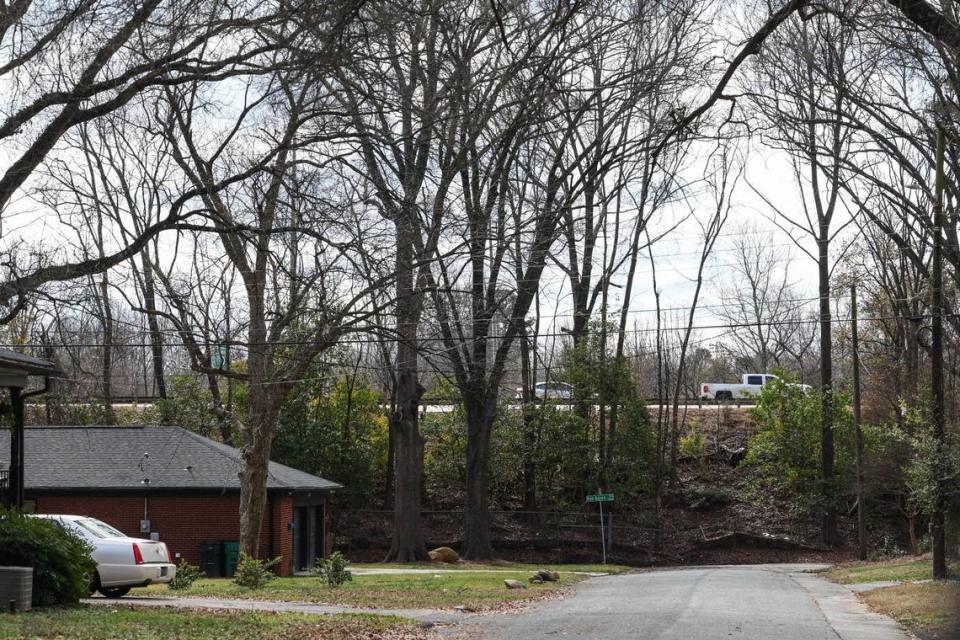
“The noise,” Robinson says, shaking his head. “There’s no sound barrier. Just, ‘Here’s a highway in your front yard,’ and that’s it. ... And the state doesn’t do the best job of maintaining the roadside area. You see, of course, the generic standard rickety fence that is meant to be the savior of everything. Debris. Noise. Trash.
“If you’re gonna uproot a piece of a community, the decency of a sound barrier would be nice. I mean, look how open that is. If a tire was to fly off an 18-wheeler, it could hit someone here. But, you know, when you’re just a Black community, nobody cares.”
Audwin Ross — who lives two blocks up the street, also right along Highway 16 — says he has to hose off his porch, front windows and windowsills every other week because of exhaust dust particles.
“We’ve been trying to get it straightened out,” he says. “... They’ve done it everywhere else. I don’t see why they couldn’t do it here.”
Highway 16 is managed by the NC Department of Transportation. Jen Goodwin, communications officer with NCDOT, tells the Observer residents can request trash removal through the NCDOT website or by calling its county maintenance office; she adds that noise-wall requests made on the website are routed to its district office in Mecklenburg County.
Robinson says the neighborhood will be making the request soon, and hopes it sails through. “We feel like they owe us.”
‘You just have to uncover it to find that out’
Robinson’s eyes practically sparkle as he boasts about the proud Black men and women who used to walk these streets so many decades ago.
Reginald Hawkins, a civil rights leader whose Madison Avenue house was firebombed in 1965 and who four years later would become the first African American to run for governor of North Carolina. Ray Booton, another civil rights pioneer who lived on Van Buren and was one of the first Black full-time police officers in Charlotte. Rowe “Jack” Motley, another Madison Avenue resident who was the first Black county commissioner in Mecklenburg and later would serve in the state legislature.
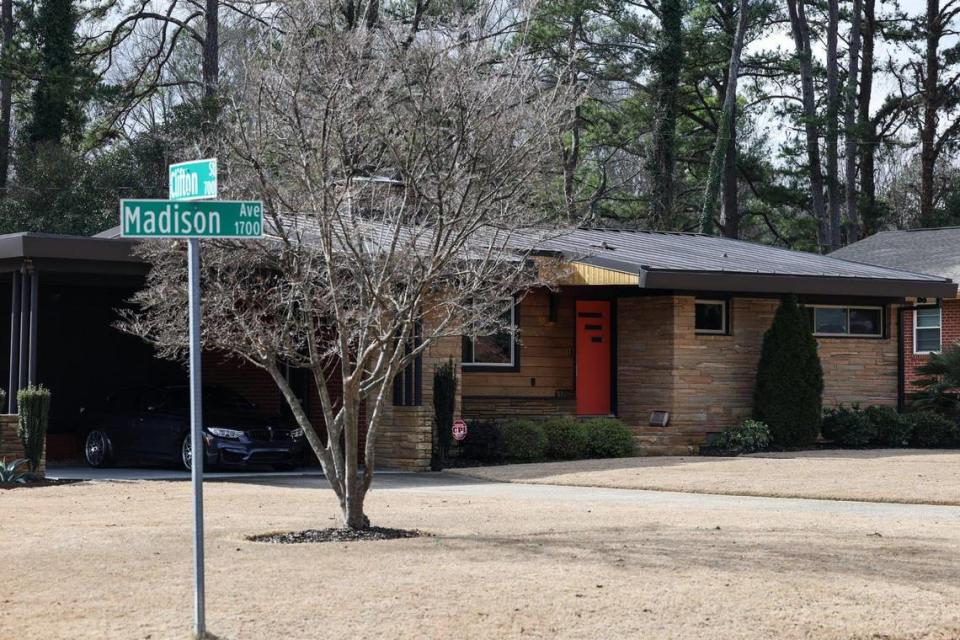
Robinson could go on listing original residents all day.
“In a concentrated way, McCrorey Heights is so significant. This is such a jewel,” he says. That’s why it frustrates him so much that so few people in Charlotte are aware of who lived here and created the rich legacy. “Other communities in other places would do so much to protect this if they had it. But I think that’s the overall character of Charlotte, to focus on the new and shiny.”
Meanwhile, he says, Charlotte’s “got a really rich history. You just have to uncover it to find that out. But there shouldn’t be anybody in CMS (Charlotte Mecklenburg Schools) who doesn’t know about this neighborhood. It’s that important.”
To that end, Sean Langley — a 43-year-old father of two who became neighborhood association president shortly after the historic designation was awarded — has been continuing to push for a future that more strenuously honors McCrorey Heights’ past.
In addition to readying a formal case for a sound barrier along Van Buren, he’s trying to get signage trumpeting the neighborhood as a historic district at its entry points as well as street sign-toppers featuring a neighborhood logo. He dreams of eventually having placards installed in front of every house (including his, which leading educator and philanthropist Elizabeth Dargan moved into in the late ’50s) that could incorporate QR codes and artificial intelligence to allow visitors to use their mobile devices to learn about who originally lived there.
And he says the neighborhood has also used historian Tom Hanchett’s original research to support an application for listing in the National Register of Historic Places.
Because, Langley says, “this isn’t just Charlotte history. This is American history.”

